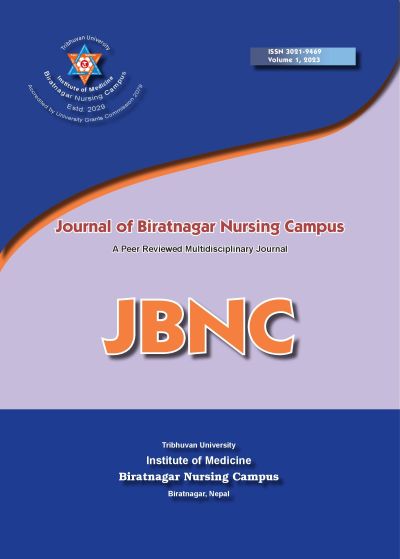Health Seeking Behavior of Marginalized Santhal Population in Jhapa District, Nepal
DOI:
https://doi.org/10.3126/jbnc.v1i1.63242Keywords:
Health Seeking Behaviour, Jhapa District, SanthalAbstract
Introduction: Santhal is one of the ethnic groups, living in Jhapa and Morang districts of Nepal. The proportion of Santhal population compared to the previous census report is continuously declining because of marginalization and migration to India.
Methods: This study was carried out qualitative cross-sectional study based on a household survey. The research work was undertaken in two Village Development Committees (VDCs) and two wards from each VDC by using simple random sampling. A total of 382 households were selected as respondents to the study. A Santhal graduate and three more interviewers were trained for data collection. The research was funded by Purbanchal University, Research Division. Approval for data collection was taken from the Research Division of Purbanchal University and permission for data collection was taken from the concerned VDC authority.
Results: The study found that 84.8% had a poor level of knowledge of health-seeking behavior, very few that is 1.7 % of respondents visited traditional healers whereas 92.9% of Santhal people had a positive perception of modern medical treatment. The majority of respondents (97.4%) took medicine when they got sick, among them 46.5% got the medicine from a primary health care center.
Conclusion: The majority of Santhal people visit healthcare settings when they become ill. Regarding the information on health-seeking behavior about two/third were informed from the senior member of the family. The majority of Santhal people had poor knowledge of health-seeking behavior and the majority had positive health-seeking behavior on modern treatment.
Downloads
Downloads
Published
How to Cite
Issue
Section
License
Copyright (c) 2023 Biratnagar Nursing Campus

This work is licensed under a Creative Commons Attribution 4.0 International License.
This license enables reusers to distribute, remix, adapt, and build upon the material in any medium or format, so long as attribution is given to the creator. The license allows for commercial use. If you remix, adapt, or build upon the material, you must license the modified material under identical terms.




